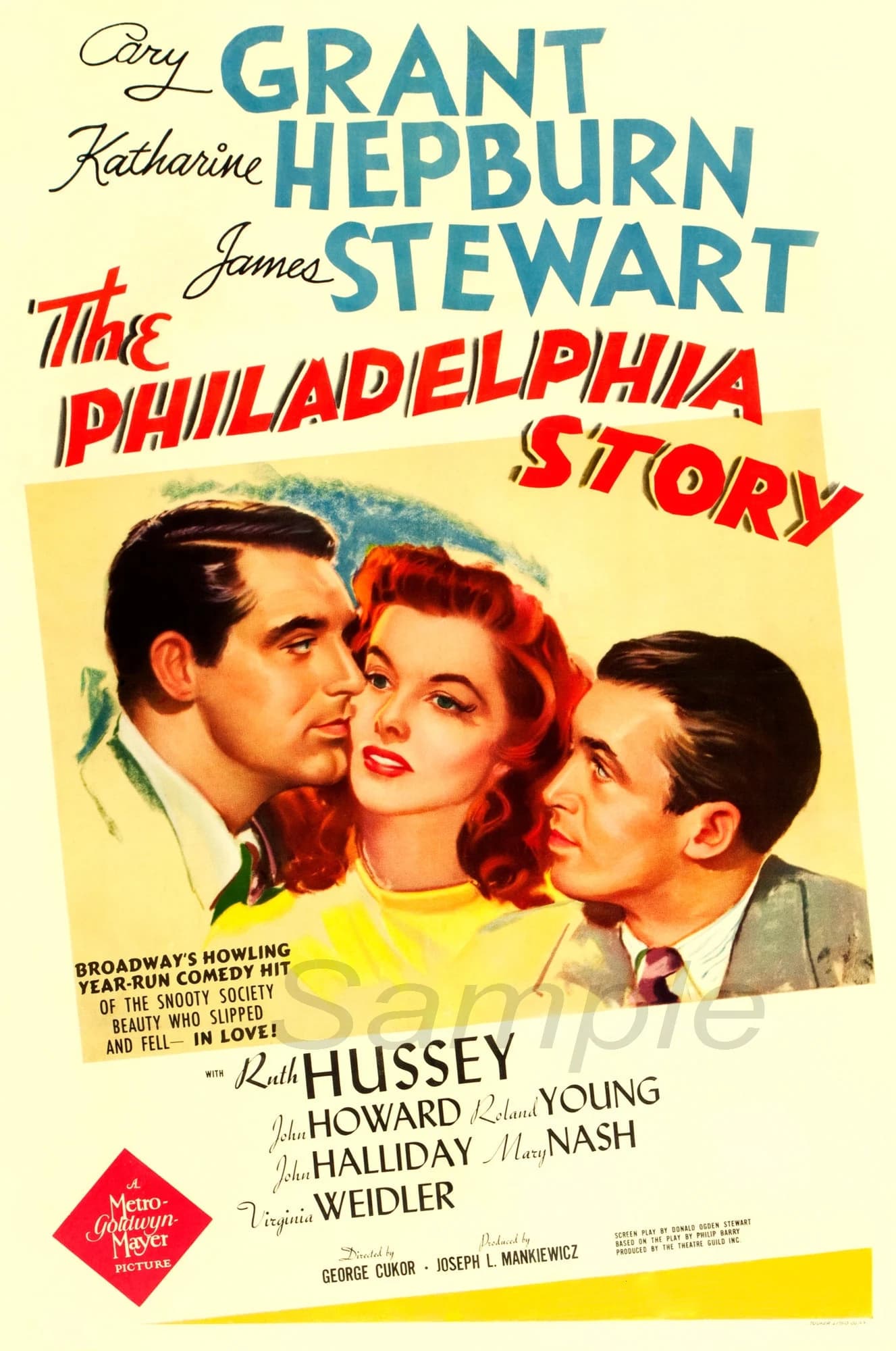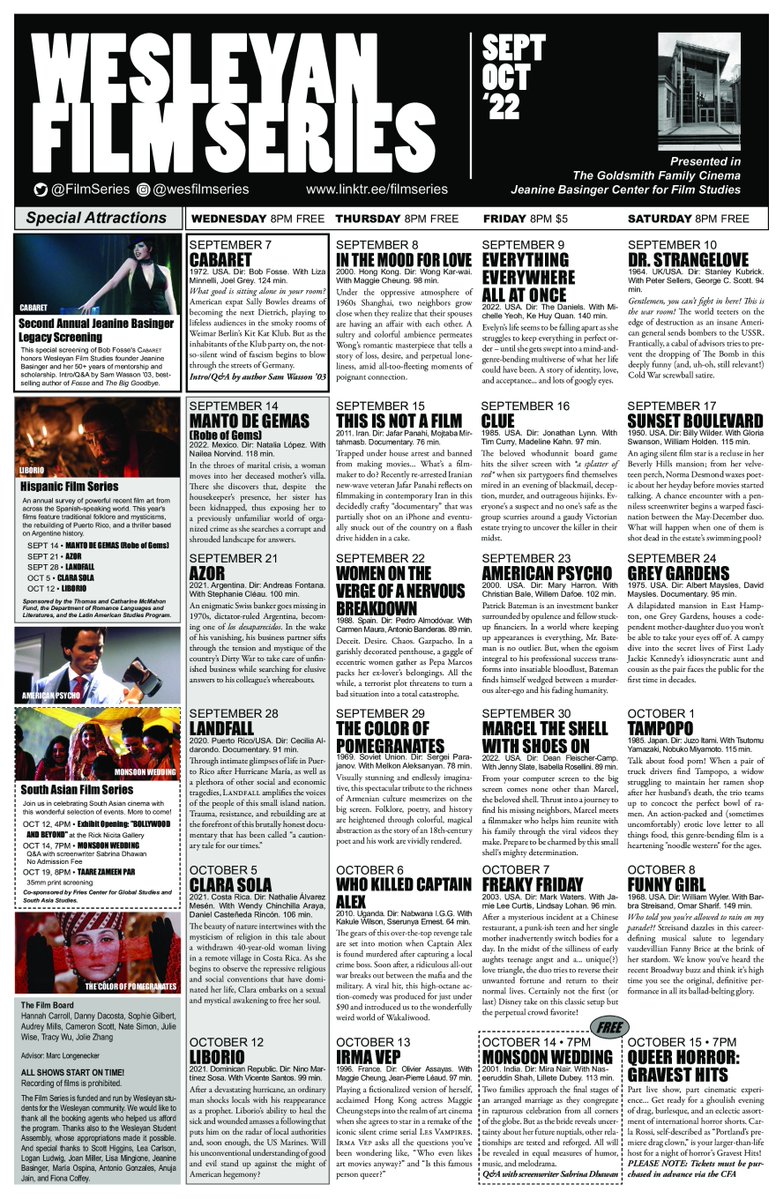
“I don’t really watch old movies.” It’s a phrase I’ve heard many times from my peers, and it’s an understandable one. In this era, where more entertainment is available at our fingertips than ever, it’s easy to feel the need to stay current. We want to watch the latest release and keep up with the zeitgeist, which is why I feel the need to make my case for why everyone should watch more old movies.
To back up for a second: What is an “old movie?” It’s a deceptively complex question. Film, as a medium, goes back more than a century. Everyone, I presume, can agree that “A Trip to the Moon” (1902) is an “old movie,” and that “Don’t Worry Darling” (2022) is a “new movie.”
But the question of where to draw the line between old and new is a tricky one. There have been numerous sea changes in American film history where that line could be drawn: the switch from silent to sound in the late 1920s, the dominance of color over black and white in the 1950s, the rise of the New Hollywood movement and the decline of the studio system in the late 1960s, the rise of the modern action blockbuster in the late 1970s and 1980s, the explosion of streaming services in the 2010s. All of these moments produced films that were quite different from those that came before.
In a highly unscientific attempt to gather opinions on this, I put up a poll on my Instagram Story. Eighty-five people replied to the question “what do you consider an ‘old movie?’” The most popular answers were that old movies were either from the ’90s and ’80s and before (chosen by 35% of respondents) or the ’70s and ’60s and before (chosen by 38% of respondents). So, close to three-quarters of these people, whom I can broadly categorize as my peers, people in their late teens and early to mid-20s, mostly consider “old movies” to be those more than a few decades old. However, 13% went even earlier and stated that “old movies” is a category stretching back from the 1950s and 40s. Conversely, another 14% argued that anything over a decade old is an “old movie,” a perspective I must admit I find somewhat bewildering. What’s clear, though, is that there’s a wide range of opinions here. When someone I know mentions an “old movie,” they’re just as likely to be referring to something from 2010 as something from 1945.
I also attached a poll to my Story asking those who watched few or no older movies what their reasons were. The top two reasons given were that such films are less accessible to view and that they seem less exciting than modern films.
The first reason is one I have less of a solution for. Streaming services do, in fact, overwhelmingly feature contemporary films over older ones. Per data gathered by What’s on Netflix, a site reporting on the aforementioned streamer’s programming options, as of May of this year, Netflix’s movie library featured 1,721 films from the 2010s, and 847 from the 2020s (a recency bias made even more impressive by the fact that we are only two years into the 2020s). By contrast, Netflix only has 271 films from the 2000s, 97 from the 1990s, and an ever-diminishing number the farther back you look, with only 6 from 1959 or earlier. In other words, Netflix has more offerings from the last 2 years than from the beginning of film history through 2009.
But if you can get past Netflix and find older movies, whether on another streaming service, at your public library, or even at the Wesleyan Film Series, you stand to gain significantly in your appreciation of movies, old and new. On a basic level, there’s a veritable treasure trove of great movies made a decade or a few back, ones that you’re bound to have a better time watching than the latest below-average Netflix original. Beyond that, it’s deeply rewarding to be able to observe trends, see the tendencies of different eras in filmmaking, and look back and see the older movies that inspired your favorite contemporary ones.
The other major reason people cited for not watching older movies is, of course, taste. What you find exciting or interesting is extremely subjective. But to this point, I would argue that excitement is a matter of good filmmaking, which can be found across eras. Certainly, I’ve seen recent releases that I found unfathomably boring, and movies from decades ago that had me on the edge of my seat. For one extremely mainstream example, the original “Star Wars,” released in 1977, even for sheer entertainment value, holds up quite favorably in comparison to 2019’s “Star Wars: The Rise of Skywalker,” despite the latter having a more modern sheen and up-to-date special effects.

Here’s another place where I’m going to endorse going to Film Series. (I’m not affiliated with them, just a fan!) Their “old” offerings, most typically their Saturday screenings, present a wide variety of films that have broadened my horizons, and, being a free place to see old movies on a big screen with an engaged, enthusiastic audience of your peers, are a wonderful resource to the Wesleyan community.
Whatever kind of movies you like, there are old ones that’ll entertain you as much as anything new. To plug a few I’ve seen at Film Series in the last year: “Sunset Boulevard” (1950) is a tense, exciting noir thriller with one of the most delightfully unhinged performances I’ve ever seen; “The Philadelphia Story” (1940) is a pitch-perfect romantic comedy with a sharp, zinger-a-second screenplay; and “Rope” (1948) is a brisk, acidic real-time story of class and murder with shades of later classics like “American Psycho” (2000) and “The Social Network” (2010). These aren’t long, dull, abstract films, as so many people I’ve spoken with fear old movies will be. They’re sharp, traditionally structured pieces of entertainment made for a general audience, and they’re as exciting today as ever.
To be clear, I realize not everyone invests as much time or interest in movies as I do. Even as a mere film studies minor, I often find myself referencing movies I thought were mainstream, but quickly realize no one else I’m talking to has ever seen. But even for the casual moviegoer, there’s a treasure trove of older films for any taste. Whether it’s making it over to Film Series on a Saturday night or taking a peek into a streaming service’s back catalog, I encourage everyone to give them a shot.
Oscar Kim Bauman can be reached at obauman@wesleyan.edu.



Leave a Reply